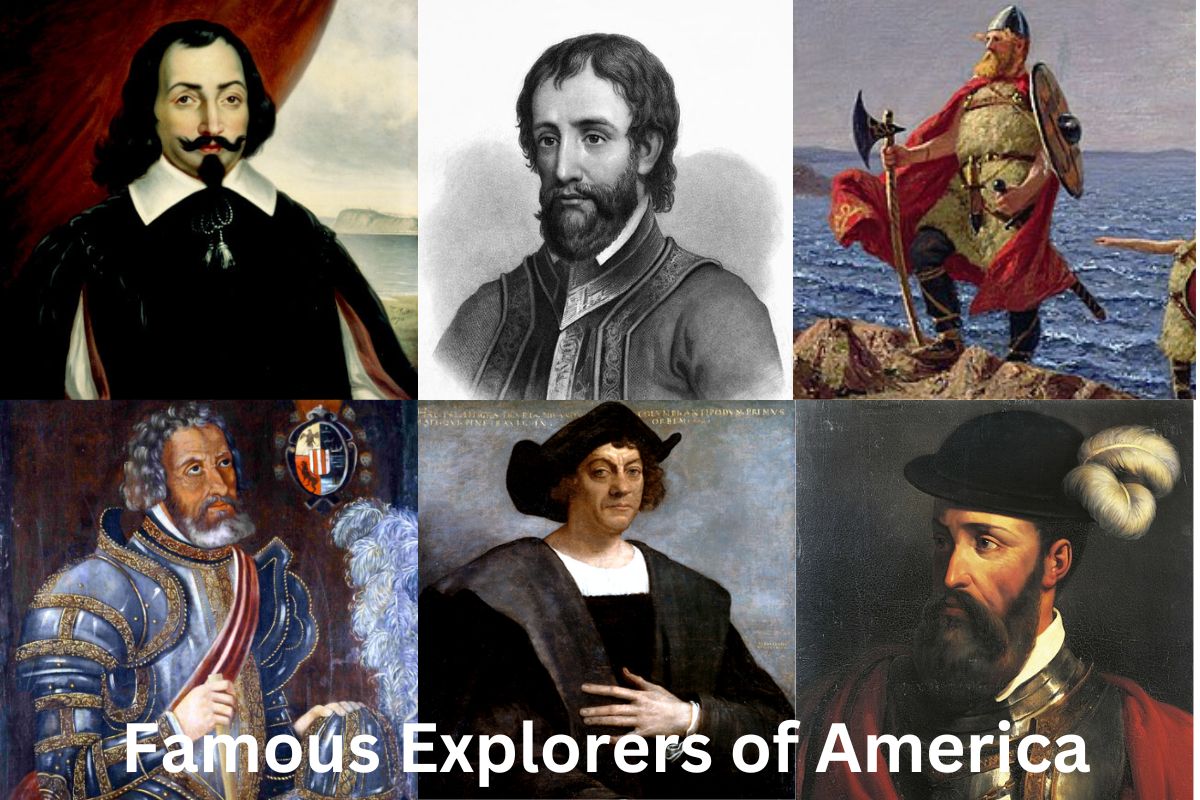European explorers’ exploration of the Americas is a key chapter in world history, marking a time of discovery, conquest, and colony. These explorers were instrumental in spreading European power in the Americas, influencing the course of history and the lives of millions of people.
Some of the most famous explorers of America include Christopher Columbus, who is credited with discovering the New World, Leif Erikson, who is believed to have been the first European to reach North America, and Hernán Cortés and Francisco Pizarro, who led the Spanish conquest of the Aztec and Inca empires, respectively.
Jacques Cartier, who explored much of modern-day Canada, and Sir Francis Drake, who circumnavigated the world and played a vital role in repelling the Spanish Armada, are two other renowned explorers.
Furthermore, explorers like Meriwether Lewis and William Clark contributed to the expansion of American knowledge of the western United States, while Juan Ponce de León and Hernando de Soto explored and colonized the southeastern United States.
These explorers are remembered as pivotal figures in exploration and colonization history, and their legacies continue to affect our view of the world and its history.
Famous Explorers of America
1. Christopher Columbus
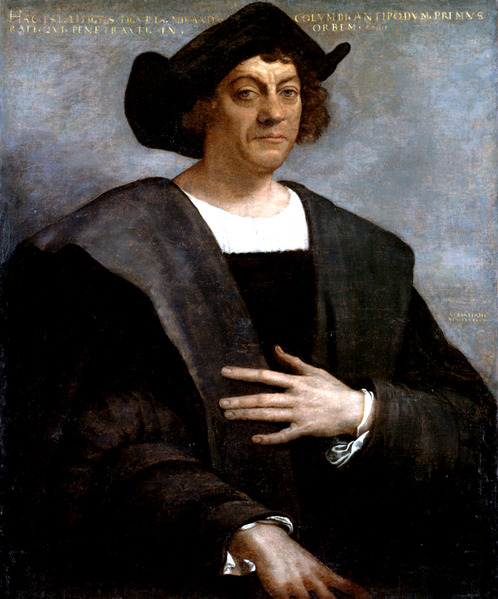
Christopher Columbus was an Italian adventurer best known for discovering America in 1492. He was born in 1451 in Genoa, Italy, and began his career as a sailor at a young age.
Columbus believed that by sailing west across the Atlantic Ocean, he could reach Asia, and he persuaded King Ferdinand and Queen Isabella of Spain to sponsor his expedition.
He set sail with three ships, the Nina, the Pinta, and the Santa Maria, and landed in the Caribbean after a long and grueling journey. Although Christopher Columbus did not reach Asia as intended, Columbus’ journey resulted in European colonization of the Americas.
Columbus returned to the Americas numerous times more, and his legacy is still contested today. While he is credited with being the first European to visit America, many historians contend that his actions led to the exploitation and maltreatment of Native People and the transatlantic slave trade.
2. Leif Erikson
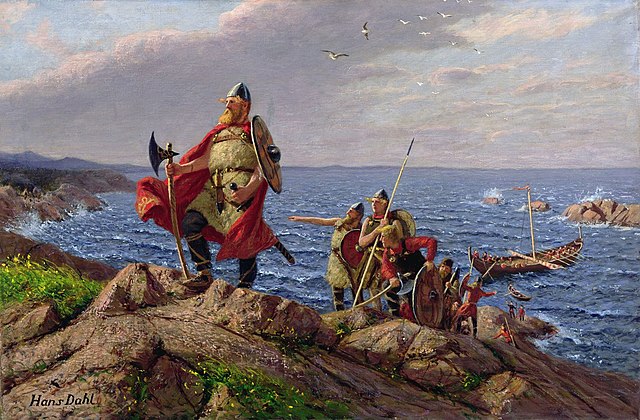
Leif Erikson was a Viking explorer who is thought to have been the first European to visit North America, several centuries before Christopher Columbus. He was born in late 10th century Iceland, the son of Erik the Red, a famous Viking explorer.
According to the Icelandic sagas, around the year 1000, Leif Erikson traveled from Greenland to North America, landing in what is now Newfoundland, Canada. He named the location Vinland and created a town there, which did not last long.
Leif Erikson’s expedition to North America is notable because it occurs roughly 500 years before Christopher Columbus’ voyage and gives proof of early European contact with the Americas.
Leif Erikson is now recognized as a symbol of Scandinavian heritage and adventure, and October 9th is designated as Leif Erikson Day in the United States.
3. William Bradford
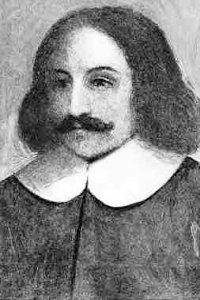
William Bradford was an English Puritan who was instrumental in the establishment of the Plymouth Colony in present-day Massachusetts. He was born in 1590 in Yorkshire, England, and was a member of the Separatist congregation that wanted to secede from the Church of England.
Bradford and the other Separatists arrived in America aboard the Mayflower in 1620 and established the Plymouth Colony. Bradford was chosen governor of the colony and remained in that capacity for the majority of his life, with the exception of a brief period when he was voted out.
Bradford is best renowned for his works about the Plymouth Colony, particularly his book “Of Plymouth Plantation,” which covers the colony’s early years and provides unique insights into the Pilgrims’ life.
He was also instrumental in arranging treaties with local Native American tribes, including as Squanto, who taught the Pilgrims how to grow grain and other crops.
Bradford is revered today as one of America’s founding fathers and a symbol of the Pilgrims’ tenacity and faith.
4. Samuel de Champlain
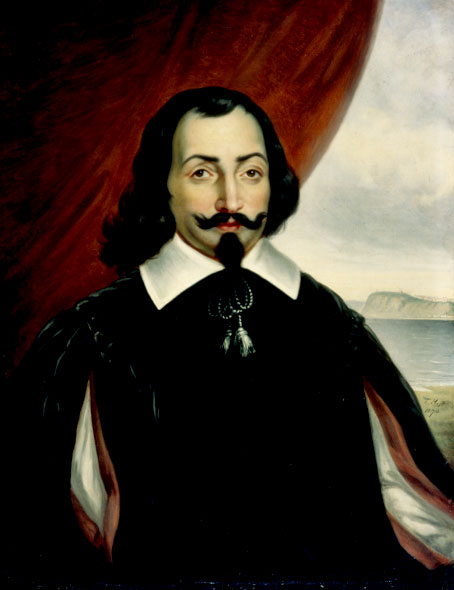
Samuel de Champlain was a French adventurer, navigator, and cartographer best known for founding Quebec City, North America’s first permanent French settlement. He was born in France in 1574 and developed an early interest in travel and navigation.
Champlain’s first expedition to Canada was in 1603, when he investigated the St. Lawrence River and the Great Lakes region. He returned to Canada several times during the next few years, establishing cordial relations with the local Native American groups.
In 1608, Champlain established Quebec City as the capital of New France and the core of the French fur trade in North America. He also founded a number of additional French communities in Canada and is credited with helping to expand French dominance in North America.
Champlain is best renowned for his accurate maps of the Canadian wilderness, which aided later explorers and traders. He is also remembered for his efforts to develop amicable relations with Native Americans, despite the fact that he battled against several tribes to safeguard French interests.
Today, Champlain is remembered as a key figure in Canadian history and a symbol of early French exploration and colonialism in North America.
5. Hernando de Soto
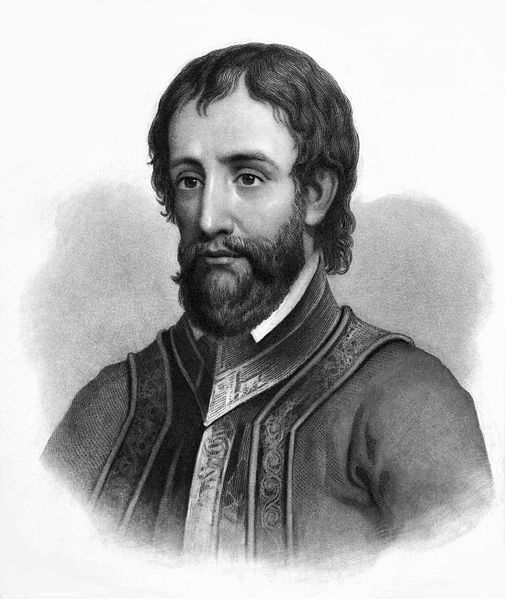
Hernando de Soto was a Spanish explorer who is recognized for his discovery of the southeastern United States, encompassing what is now Florida, Georgia, and Alabama. He was born in Spain in 1496 and traveled to the Americas on multiple occasions.
In 1539, de Soto led an expedition of nearly 600 people to Florida in search of riches and to increase Spanish dominion. Over the next four years, he traversed most of the southeastern United States, encountering diverse indigenous civilizations and making alliances and battles with different tribes.
Also Read: Facts About Hernando de Soto
De Soto’s journey was marred by violence and exploitation, killing thousands of indigenous people. It did, however, open the way for Spanish colonization of the southeastern United States and the founding of Pensacola, Florida.
De Soto is known today as a pivotal figure in the history of Spanish exploration and colonization in the Americas. His expeditions contributed to the expansion of Spanish dominance in the southeastern United States, paving the stage for later settlement and colonization in the region.
6. Hernán Cortés
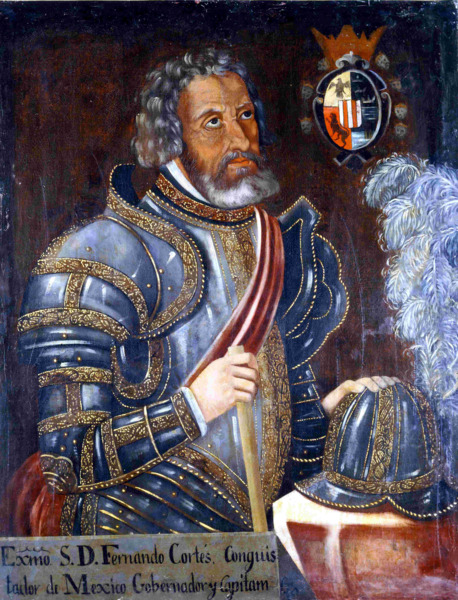
Hernán Cortés was a Spanish conquistador best remembered for defeating the Aztec Empire in modern-day Mexico. He was born in 1485 in Spain and arrived in the Americas around 1504.
Cortés conducted an expedition to Mexico in 1519 with the intention of discovering wealth and expanding Spanish control. He arrived in the Aztec Empire’s domain and waged a conquest campaign against the Aztecs for the following two years, eventually taking their capital city of Tenochtitlán.
Cortés’ invasion of the Aztec Empire was harsh, and thousands of Aztecs were killed. It did, however, open the way for Spanish colonization of Mexico as well as the rest of Central and South America.
Cortés is remembered as a symbol of Spanish colonialism and conquest in the Americas. The fact that his conquests were marred by bloodshed, exploitation, and the devastation of indigenous civilizations complicates his legacy.
He is also credited with molding the early history of the Americas and the global exchange of ideas, products, and people.
7. Francisco Pizarro
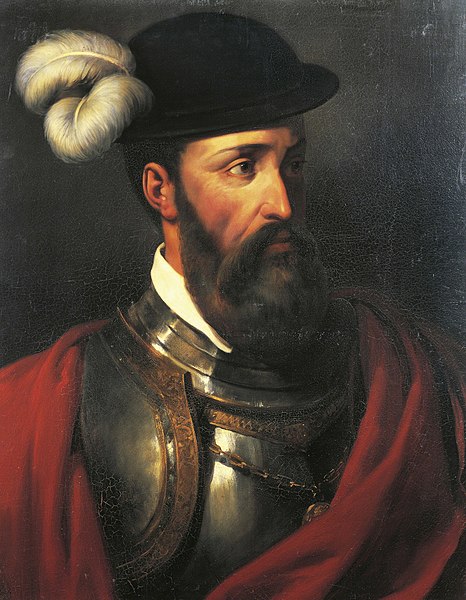
Francisco Pizarro was a Spanish conquistador most remembered for defeating the Inca Empire in modern-day Peru. He was born in 1471 in Spain and arrived in the Americas around 1502.
In 1531, Pizarro conducted an expedition to Peru with the purpose of obtaining wealth and increasing Spanish dominion. He arrived in the Inca Empire’s domain and fought a conquest campaign against the Incas over the next several years, eventually taking their capital city of Cuzco.
The invasion of the Inca Empire by Pizarro was characterized by violence, exploitation, and the annihilation of Incan civilization. It did, however, open the way for the Spanish colonization of Peru and the rest of South America.
Pizarro is remembered as a symbol of Spanish colonialism and conquest in the Americas. His legacy is marred by the fact that his conquests killed thousands of Incas and destroyed their culture and way of life.
8. Henry Hudson
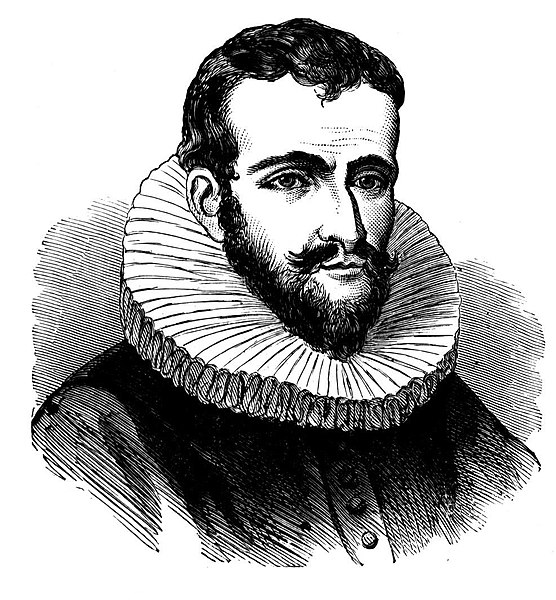
Henry Hudson was an English explorer who made four expeditions in quest of a northern passage to Asia. He was born in England in 1565 and spent the majority of his life looking for a northwest passage to Asia.
In 1607, Hudson set sail for the Muscovy Company in pursuit of a northeast passage to Asia. Although he did not locate a passage to Asia, he did discover the Arctic Ocean island of Spitsbergen.
Hudson’s most famous expedition took place in 1609, when he set sail for the Dutch East India Company in pursuit of a northwest passage to Asia. He investigated the Hudson River and laid the groundwork for the Dutch claim to what is now New York City.
Further journeys by Hudson were fruitless, and he and his crew were abandoned in the Arctic in 1611. He and his son and other crew members were never seen again.
Today, Henry Hudson is remembered as a key person in the history of discovery and a symbol of the quest for a northwest passage to Asia. His journeys contributed to a better understanding of the Arctic and North America, paving the way for later Dutch and English exploration and settlement.
9. Jacques Cartier
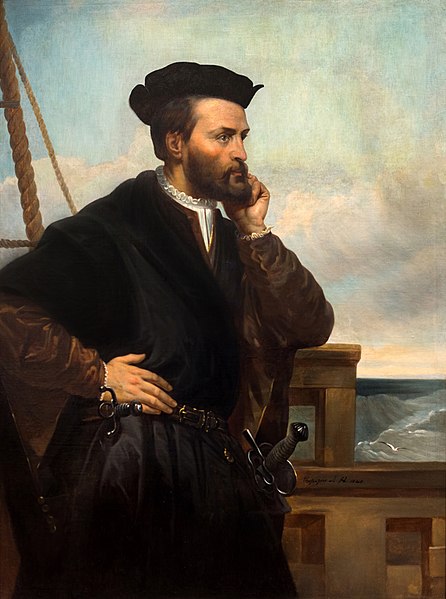
Jacques Cartier was a French explorer best remembered for exploring the St. Lawrence River and the Gulf of St. Lawrence in modern-day Canada. He was born in France in 1491 and traveled to Canada three times between 1534 and 1542.
Cartier explored the Gulf of St. Lawrence on his first trip and made contact with the local indigenous people, whom he dubbed “Indians.” He built close connections with the locals and claimed the land for France.
Cartier discovered the St. Lawrence River on his second voyage and founded a settlement in what is now Quebec City. The agreement, however, did not last, and Cartier returned to France.
Cartier’s third and last journey discovered what is now Montreal and continued his hunt for a northwest path to Asia. Despite the fact that he did not discover a path to Asia, his explorations of the St. Lawrence River helped pave the way for French colonization of Canada.
Cartier is acknowledged today as a pivotal player in French exploration and colonization of Canada. His journeys contributed to a better understanding of the region and cemented French claims to most of North America.
10. Sir Francis Drake
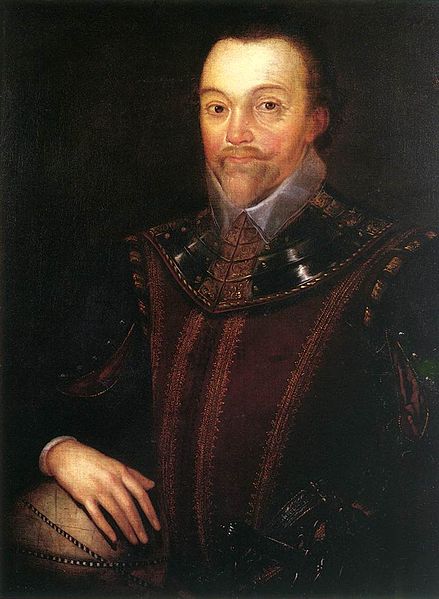
Sir Francis Drake was an English explorer, privateer, and naval commander most renowned for circumnavigating the world and destroying the Spanish Armada. He was born in 1540 in England and started his profession as a sailor at a young age.
Drake embarked on his most famous expedition, sailing around the world on the Golden Hind, in 1577. He explored much of the Pacific Ocean for England and claimed the region that is now California.
Drake was also instrumental in defeating the Spanish Armada in 1588. He led an English force that attacked the Spanish navy in the English Channel, ensuring English domination of the waters.
In addition to his naval accomplishments, Drake was also involved in privateering, invading Spanish ships and colonies in the Caribbean and South America. He was a divisive character, praised by the English for his daring and skill yet loathed by the Spaniards for his attacks on their ships and colonies.
Drake is acknowledged today as a pivotal figure in the history of exploration and naval combat. His travels contributed to the expansion of the British Empire by increasing knowledge of the world and establishing English domination of the seas.
11. John Smith
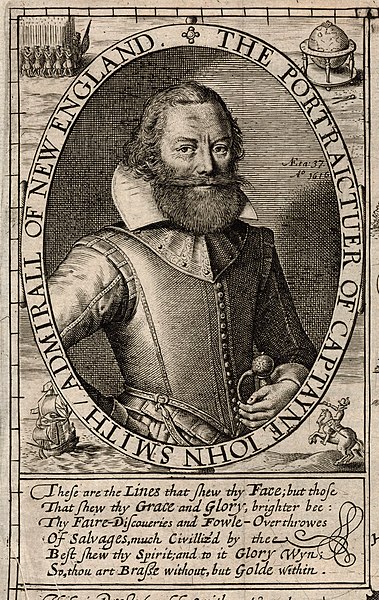
John Smith was an English soldier, explorer, and author who was instrumental in the establishment of the Jamestown Colony in modern-day Virginia. He was born in England around 1580 and came to America as a member of the Virginia Company in 1607.
Smith was instrumental in developing trading links with nearby Native American tribes and directing trips to explore the region during the early years of the Jamestown Colony. He was also a key participant in the colony’s early political system, serving as president from 1608 to 1609.
Smith is arguably best known for his encounter with Pocahontas, the Powhatan chief’s daughter. According to Smith’s narrative, he was arrested by the Powhatans and brought before Pocahontas, who interceded on his behalf and saved his life.
Smith is also well-known for his books about the Jamestown Colony and his travels in America. His works, such as “The Generall Historie of Virginia, New-England, and the Summer Islands,” shed light on the early years of English settlement in America.
Smith is acknowledged today as a pivotal role in American exploration and colonization history. His thoughts and leadership aided in the establishment of America’s first successful English colony and paved the path for the development of English power in North America.
12. Juan Ponce de Leon
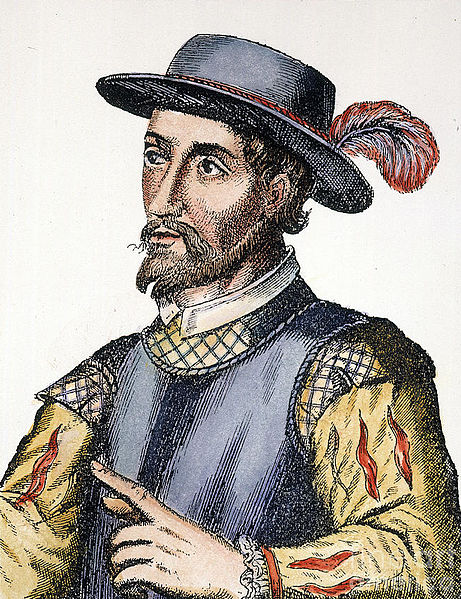
Juan Ponce de León was a Spanish adventurer most remembered for exploring Florida and searching for the legendary Fountain of Youth. He was born in Spain in 1474 and traveled to the Americas on multiple occasions.
Ponce de León conducted an expedition to Florida in 1513, when he built the first European settlement on North America’s landmass. Because of the rich vegetation he found, he named the region Florida, which means “flowery” in Spanish.
Ponce de León is also remembered for his quest for the Fountain of Youth, a mythological spring purported to restore youth and energy to anybody who drank from it. Despite the fact that he did not discover the Fountain of Youth, his pursuit aided in the exploration and colonization of Florida.
Ponce de León returned to the Americas several times more, including an ill-fated mission to Florida in 1521, during which he was wounded by a native arrow and died as a result of his injuries.
Ponce de León is known today as a pivotal role in Spanish exploration and colonization of the Americas. His expeditions aided in the expansion of Spanish influence in the region and opened the way for the colonization of Florida and other portions of North America.
13. Meriwether Lewis and William Clark
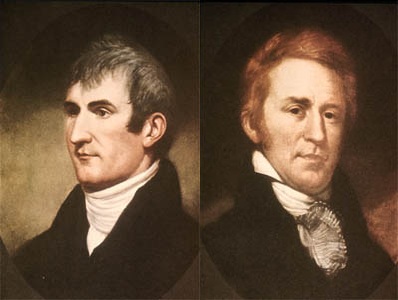
Meriwether Lewis and William Clark were American explorers best remembered for leading an expedition to explore and map the western United States. In 1804 and 1806 the expedition was known as the Lewis and Clark Expedition.
President Thomas Jefferson tasked Lewis and Clark with exploring the newly acquired Louisiana Territory and locating a maritime passage to the Pacific Ocean. The mission traversed over 8,000 miles with a squad of 33 persons, including troops, interpreters, and hunters.
On their journey, Lewis and Clark encountered a diverse mix of indigenous cultures and species, and they collected thorough maps and scientific observations of the region. They also formed cordial relationships with many of the native tribes they encountered, which aided eventual development and trade in the area.
The Lewis and Clark Expedition is seen as a watershed moment in American history and a symbol of the country’s westward expansion. It contributed to a better understanding of the western United States and cleared the way for later exploration and settlement in the region.
